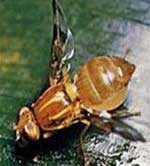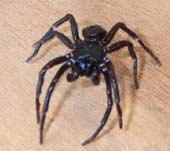Drought is Creating Ideal Conditions for Mormon Crickets to Thrive in Oregon, Threatening Farmers and Ranchers.
With a maximum length of up to 8 cm and a voracious appetite, the Mormon cricket is a giant insect capable of devastating crops. They were named in the 1800s after wreaking havoc on the fields of Mormon settlers in Utah. Although referred to as “crickets”, these creatures are actually members of the katydid family, not true crickets.

A Mormon cricket caught in Blalock Canyon, Oregon, USA on June 17. (Photo: AP)
Mormon crickets are native to the western United States and are not a new species in Oregon, but the heat and drought in recent years have created ideal conditions for their eggs to hatch, leading to significant outbreaks.
This giant insect not only damages crops but also acts as a predator. If food sources are insufficient, they are willing to cannibalize each other, whether alive or dead.
In 2021 alone, Oregon agricultural officials estimated that up to 4 million acres of farmland across 18 counties were damaged by Mormon crickets and grasshoppers.
Under a new initiative in Oregon, private landowners such as farmers and ranchers can request the Oregon Department of Agriculture (ODA) to survey their land. If there are more than three Mormon crickets or eight grasshoppers per square foot (one square foot is approximately 0.8m2), the ODA will recommend chemical treatment. In some areas near Arlington surveyed last month, there were as many as 201 newly hatched Mormon crickets per square foot.

Mormon crickets not only damage crops but also act as predators. (Photo: AP)
State officials recommend aerial spraying of Diflubenzuron. This insecticide works by inhibiting growth, preventing nymphs from maturing into adults. Landowners may be reimbursed up to 75% of the costs.
However, according to the Invertebrate Conservation Association and the Center for Biodiversity, Diflubenzuron can harm monarch butterflies, certain bee species, and grasshopper-eating quails. Some aquatic invertebrate species that serve as important food sources for fish are also susceptible to this insecticide.
Todd Adams, a field entomologist in eastern Oregon and ODA coordinator, stated that as of mid-June, the ODA had received 122 survey requests and issued 31 treatment recommendations for approximately 16,187 acres.
If the decision is made to spray Diflubenzuron, landowners must act quickly as it is only effective on nymphs. “Once they develop into adults, it’s too late,” Adams emphasized.





















































